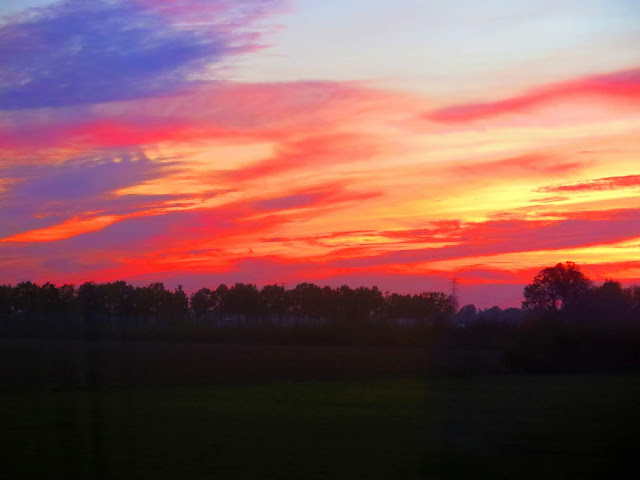The Prayer book of "Maria van Gelre"
A busy weekend,
filled with music, passive and active, a train journey and an exhibition. This
blogpost will be about the exhibition.
A doodle in the margin
I had never
heard of "Maria van Gelre" (Mary of Guelders), but this 15th century woman
of noble birth is the reason for a wonderful exhibition. Although she married
twice, both times to important and influential men, she never had children. But
she left the world something else, an amazing prayer book, written and
illustrated by the most accomplished artists and miniaturists. It is a lavishly
illuminated manuscript, consisting of some 200 vellum pages. The book has been locked
away in a box for decennia, as it was considered too fragile and so nobody was
allowed to handle it and see its unusual beauty.
Some illustrated pages
However, a restoration and
conservation plan has been made by a team of Dutch and German scholars and
art-historians, and so far some 40 pages are ready. The book consists of loose
leaves, and will probably be kept that way although the original binding is still
there. The advantage of an unbound book is of course that we can now admire the
individual pages.
The Last Supper
A enlargement of the illustration; Lazarus in heaven and the rich man suffering in the fires of hell and asking for water
All 40 pages are on view, but only 20 simultaneously. Halfway
during the exhibition, they will be replaced by the remaining 20 pages. The
detail of the miniatures, the brilliancy of the colours, the cobalt blue, bright
red and gold, the pages could have been made yesterday. Looking glasses are
provided to enable visitors to study the fine details.
There are
also videos about the restoration work, which are most enlightening. All in all,
a wonderful exhibition, which was worth a round trip by train of some 3,5 hours.
A tapestry, and a detail of a lace shawl with the martyrdom of St Catharine
The wooden statue of the madonna and child on the right comes from Renkum.
Fragment from a church: St. Caecilia
Maria and
her husband held court in many places where they owned castles. The Valkhof in
Nijmegen where the museum is located, was one of their castles. Only the ramparts
remain, and a small octagonal Romanesque church dating back from the Middle
Ages. It was the chapel of the Valkhof. Because of the exhibition it was open
to the public, unusual in Holland where most churches are closed except during
functions such as services and concerts.
I have
tried to capture some of the beauty of the manuscript, but behind glass and
without flash the results are not always satisfactory, nor is the angle or the
reflection of overhead lights.. .Some of the – religious - statues on display come
from places, chapels and monasteries, where Maria would have worshipped.
I should
have bought the splendid art catalogue, and regret my decision never to buy any
catalogue again. So I’ll have to live with the pictures I took and the memories.
Or go again in a few weeks’ time to see the other 20 pages! 

All in all
a most satisfactory day out, with an unexpected Evensong in the main church,
the St. Stephens. An added bonus was the spectacular sunset over the river Waal
from my train window.
Taken through the train window, so there are some strange reflections


















































